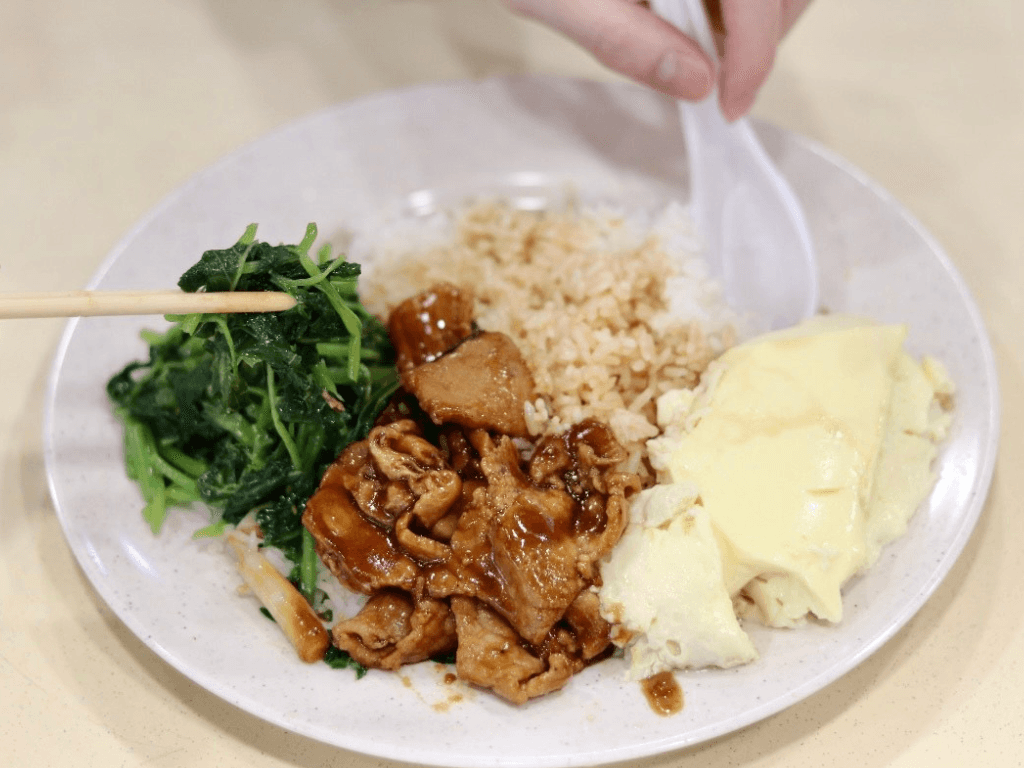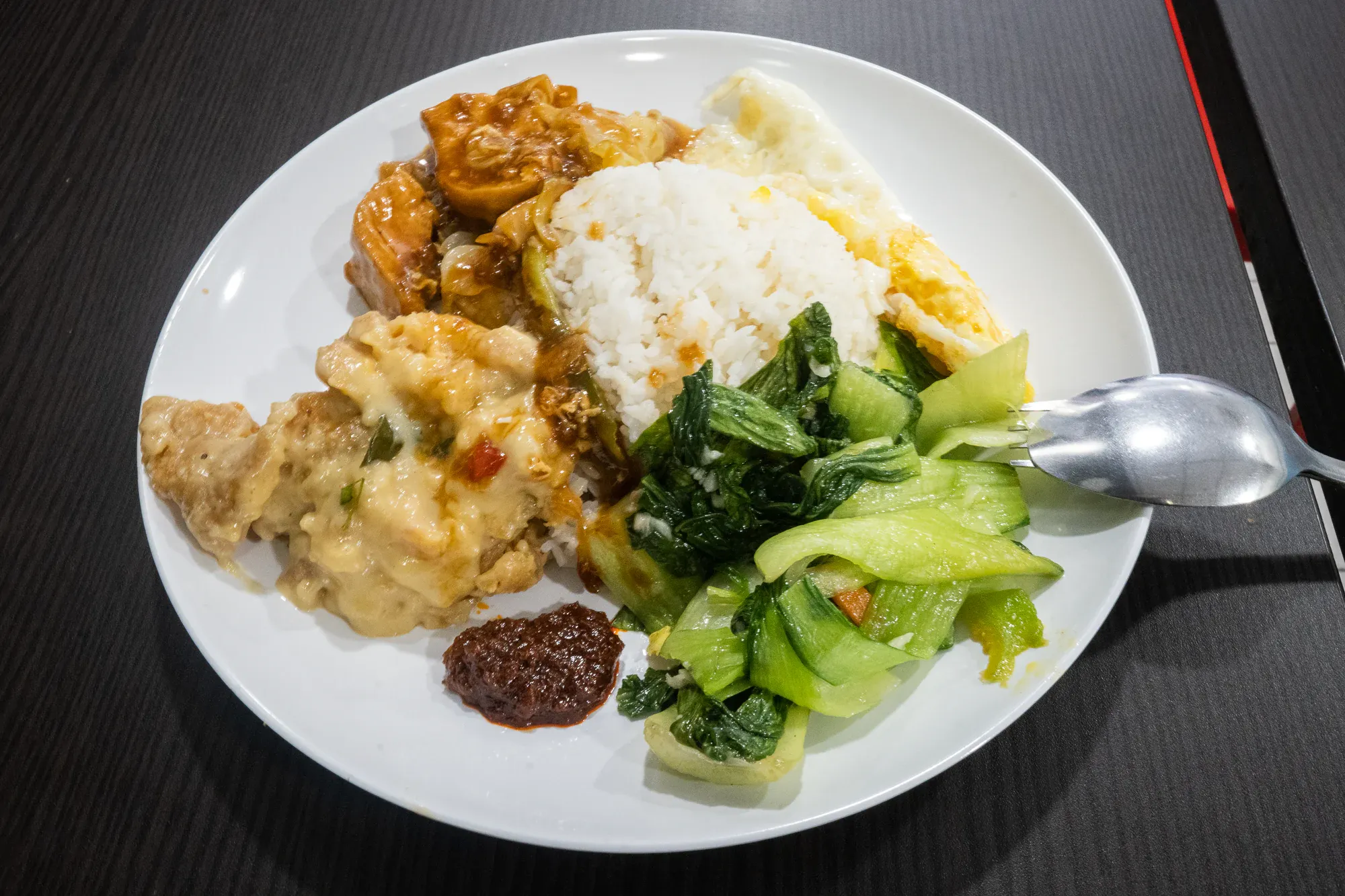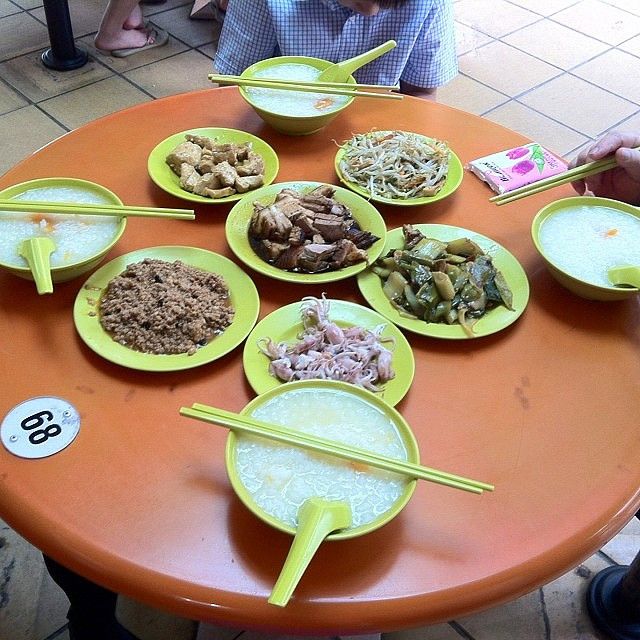地元の人のように食べる:蔡凡を探索
最もローカルな体験を
シンガポールに旅行して地元の人のように食事をしたいなら、レストランではなくホーカーセンターやコーヒーショップへ行きましょう。ホーカーセンターやコーヒーショップにはさまざまな選択肢があり、そのほとんどは地元の味を体現しています。地元のものを食べるしかし、もしあなたがとてもローカルな「日常」体験を探しているなら、おそらく試してみるべきなのは蔡凡。

蔡凡とは何ですか?
蔡凡中国語で「ご飯と料理」という意味です。チャップチェ png(福建語以外は同じ意味です)またはcai png(これも同じ意味ですが、福建語です)。これは、蒸しご飯と一緒にお好みの具材を選んで楽しめるカスタマイズ可能な食事です。
サイファンはシンガポール特有の料理ではありません。アジアの多くの国で、名前は違っても、このような料理を目にすることができます。そして、あなたがアメリカ出身なら、パンダエクスプレスを思い浮かべてください。(実際、アメリカを訪れる多くのシンガポール人は、パンダエクスプレスを基本的にアメリカ版蔡凡)
蔡凡のコンセプトはまったくユニークではありませんが、地元の人々の日常の食事や味覚を垣間見るにはおそらくこれが一番近いでしょう。家庭料理ではないことは確かですが、これらの屋台で提供されるものは、実際に地元の中国人の家庭で調理されているのを見ることができるものです。
注文方法蔡凡
料理を考える
ほとんどの Cai Fan の店舗ではメニューが用意されていません。ガラスの窓越しに料理が展示されており、どんな料理か知っていることが前提となっています。固定メニューがなく、提供される料理が日によって変わることを考えると、メニューがないのはある意味理にかなっています (同じ日でも、異なるタイミングで異なる料理が出てくる可能性もあります)。
何かを見ていて、それが何なのかよくわからない場合(たいていは、それが鶏肉なのか豚肉なのかを知りたい場合)、遠慮なく店主に尋ねてください。彼らはおそらく不機嫌そうな顔をするでしょうが(たいていの場合そうなります)、教えてくれるでしょう。

蔡凡の価格を解読する
価格は必ずしも透明性が高くなく、料理ごとに記載されていません。代わりに、価格は「野菜 1 品 + 肉 1 品」または「野菜 2 品 + 肉 1 品」などの組み合わせに基づいていることが多く、注文した野菜料理と肉料理の数に基づいて食事の料金が請求されます。もちろん、記載されているさまざまな組み合わせに制限されることはありませんが、記載されているもの以外の料金モデルは明確ではありません。
とはいえ、リストされている組み合わせのいずれかに基づいて注文した場合でも、いくつかの驚きが発生する可能性があります。
- 野菜料理を注文したと思うかもしれませんが、その料理にはひき肉が加えられているため、肉料理としてカウントされます。
- 魚は肉料理としてカウントされず、別途料金がかかります。通常は高価です(特にCai Fanは想定(予算重視の食事には向いていません。)本当に魚が食べたい場合は、注文する前に値段を聞いておくと便利です。
- チキンカツレツも魚と同じようなカテゴリーに分類されます。通常は独自の価格があり、通常は高価です。同じルールが適用されます。注文する前に価格を尋ねてください。
食事を注文する際、記載されている価格は、あなたが支払う金額の目安になりますが、価格がその見積もりを上回る場合に備えて余裕を持たせてください。注文が終わった後に初めて支払う金額が正確にわかりますが、典型的な蔡ファン食事の料金は SGD3.50 から SGD5 程度です。(もちろん、一等地に泊まる場合は、もっと高い料金を支払う覚悟をしてください)
蔡凡の注文
では、どうやって蔡烤を注文するのでしょうか?実に簡単です。店主は通常、店内で食べるかテイクアウトするか(テイクアウトとも呼ばれます)を尋ねるところから始まります。ダバオこの時点で、店主に白米をもっと食べたいか、減らしたいかを伝えます。白米を追加しても通常は追加料金はかかりませんし、減らしても割引はありません(食べきれないとわかっている場合は無駄を減らすことができますが)。一部の店舗では、玄米、お粥、またはビーフン— そして、これらのオプションのいずれかを希望する場合は、この時点で店主に知らせる必要があります。そうしないと、デフォルトは常に白米になります。
また、料理は通常、同じご飯の上に盛り付けられるだけなので注意が必要です。ただし、ご飯と料理が混ざるのが嫌な場合は、別々に盛り付けるようリクエストすることもできます。

ベースが決まったら、料理を選びましょう。料理が何であるか分かっている場合(たとえば、料理が明らかにブロッコリーである場合)、料理の名前で注文してください。ただし、特定の料理の呼び方が分からない場合は、心配しないでください。指さして、「これ」または「あれ」と言うだけです。店主は、料理を皿に載せる前に、あなたにもう一度確認します。
選択が終わると、グレービーソースが必要かどうか尋ねられることがあります。通常は、カレーか煮込みソースの 2 つの選択肢があります。尋ねられなくても、いつでもリクエストできます。そうすることをお勧めします。そうしないと、食事が非常にパサパサになってしまう可能性があります。
一般的な蔡凡料理
各店舗には独自の料理があり、2 つの店舗でまったく同じメニューがあるわけではありませんが、いくつかの料理はかなり一般的で、どの Cai Fan を販売している店舗でもほぼ確実に目にすることができます。これには次の料理が含まれます。
- 酢豚(またはグルヨウ)
- ひき肉入り蒸し卵
- ポップコーンチキン
- カレーチキン(またはカレー野菜)
- 豆腐
- キャベツ炒め
蔡凡の代替品
地元の中華風のご飯や料理を探しているけれど、蔡凡、あなたも検討してみてください潮州粥コンセプトは蔡凡潮州粥は主食と料理がセットになっているという意味です。しかし潮州粥の場合、主食はお粥です。デフォルトでは、料理はお粥の中に全部一緒に入っているのではなく、別々の皿で出されます。

中華料理の気分ではない場合や、もっと風味豊かなものを食べたい場合は、ナシパダンこれも米料理ですが、中華料理ではなくマレー料理です。